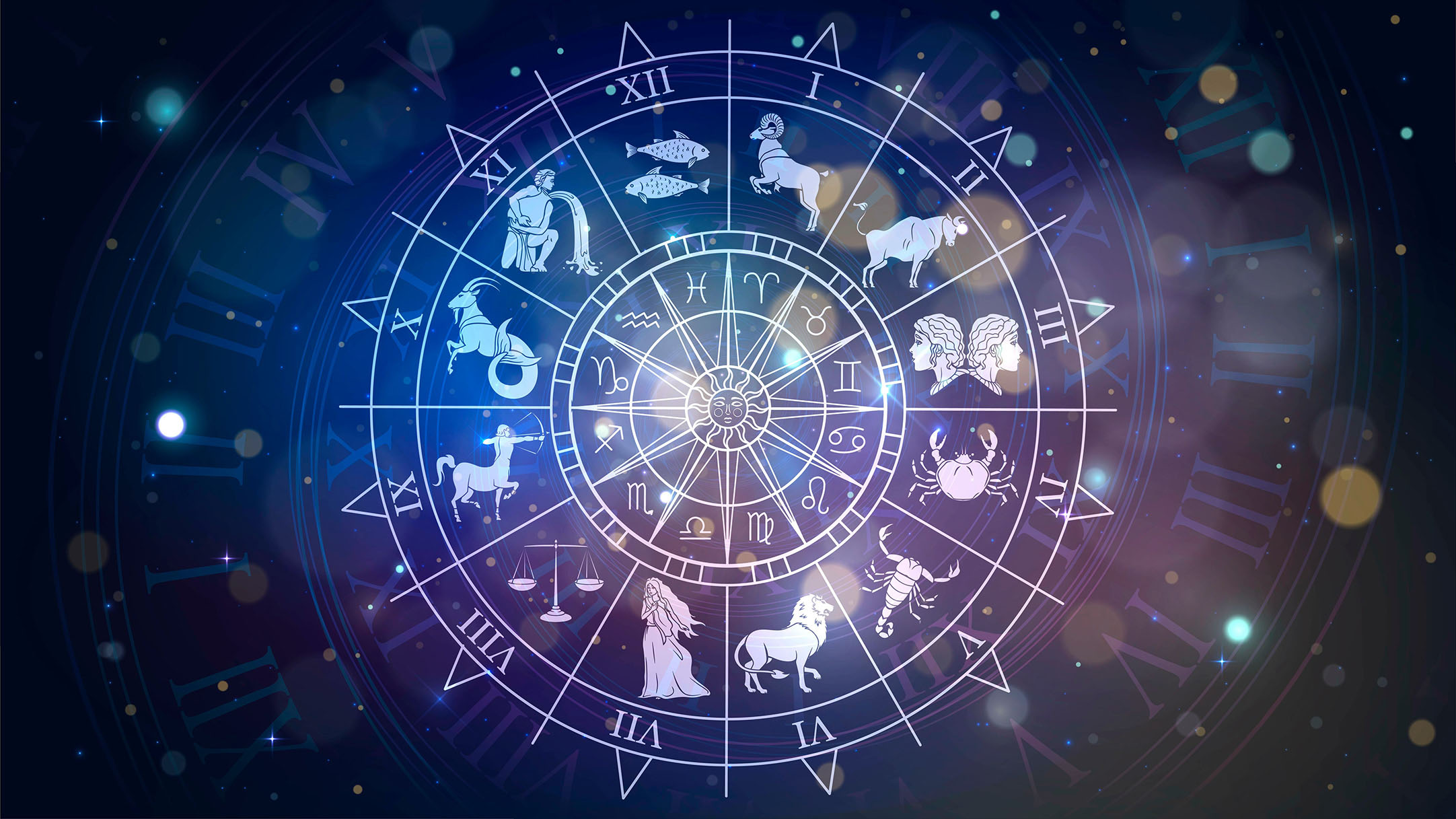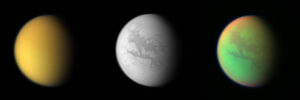Skip to your Zodiac constellation:
Aries – (March 21 – April 19)
Taurus – (April 20 – May 20)
Gemini – (May 21 – June 20)
Cancer – (June 22 – July 22)
Leo – (July 23 – August 22)
Virgo – (August 23 – September 22)
Libra – (September 23 – October 22)
Scorpio – (October 23 – November 21)
Sagittarius – (October 23 – November 21)
Capricorn – (October 23 – November 21)
Aquarius – (January 20 – February 18)
Pisces – (February 19 – March 20)
What is the Zodiac?
The “zodiac” is a stretch of the sky in which the Sun, Moon, and planets move across. The Zodiac extends 9° above and below the ecliptic, or the Earth’s orbital plane around the Sun. Almost all planetary bodies of the Solar System appear in the nighttime sky along the ecliptic since the planets orbit the Sun roughly on the same plane.
Your Zodiac sign coincides with the Zodiac constellation the Sun appears within during your birth. If you are a Leo, the Sun appears within the Leo constellation during the 30 days or so around your birthday. In astrology, these celestial positions inform a person’s personality, predict the future and inform decision-making.
Humankind’s fascination with the nighttime sky dates back to the beginning of oral and written history. There was always something profoundly spiritual and breathtaking about staring into the infinite beyond. I felt the same when I saw a solar eclipse for the first time. The fact that there are inanimate objects that move like clockwork regardless of our actions makes you wonder about the purpose of our existence. It’s no wonder that we correlate celestial phenomena to our everyday lives to this very day.
The Zodiac dates back to ancient civilizations like the Greeks and Romans, who developed religious beliefs and an expansive mythology around heavenly bodies and thier movement across the sky. The ancient Egyptians developed the concept of constellations and documented how the Sun appeared to “travel” at various periods during the year.
In Ancient China, noblemen interpreted eclipses or sunspots as signals of good or bad times for their emperor. By the second millennium B.C. epicenter, the Sumerians and Babylonians appeared to have divination practices. The Venus tablet of Ammisaduqa highlights the belief that watching planets and stars was a way to keep track of thier gods in the sky.
This tablet, which dates from the first millennium B.C. and monitors Venus’s path, is one of the first examples of what are known as Babylonian planetary omens.
The 12 Zodiac Signs and Constellations
The logo of the star signs frequently has several meanings. Different civilizations interpret symbols differently; even within the same culture and logo, there can be multiple interpretations. The most well-known stories about the Zodiac signs originate from Ancient Greece.
The first astrological sign is Aries, represented by a ram. The Greek myth of Aries tells the tale of Phrixus and Helle, twins born to Athamas, a Boetian monarch, and Nephele, the goddess of the clouds. Nephele left in rage because Athamas fell in love with a woman named Ino, creating a drought in her wake. To relieve the drought-afflicted region, Ino attempted to sacrifice Phrixus and Helle. Nephele intervened by dispatching a ram bearing golden wool to save them.
The two children could flee on the winged ram’s back. The ram was supposed to be sacrificed to Mars, the God of war. However, Zeus stole it instead and hung it in the sky in his honor. Do not confuse Aries with Ares, the Greek God of war, and the Roman God of war, Mars.
Aries is home to the red-dwarf star, Teagarden Star. The Teagarden Star is significant because it’s relatively close to us (12 light-years). It’s one of the few stars to exhibit a high “proper motion” (we know of around ten stars), and both of its planets are possibly habitable.
In layman’s terms, proper motion is the movement of stars and other celestial objects against the backdrop of distant stars that do not appear to move. High proper motion directly results from some stars being extremely close to us, usually within 33 light-years or 10 parsecs. Unfortunately, Teagarden Star is not visible to the naked eye.
Taurus - (April 20 – May 20)
Taurus, the second constellation, is represented by a bull associated with fertility. Taurus is one of the oldest known constellations, possibly dating back to the cave paintings almost 15,000 B.C. years ago, during the Stone Age. The bull constellation was present within the mythologies of Ancient Sumer, Akkad, Assyria, Babylon, Egypt, Greece, and Rome. The constellation received its significance because it marked the location of the Sun during the spring equinox from 4000 BC to 1700 B.C.
Taurus is usually associated with Zeus in Greek mythology. Zeus transformed into a bull to seduce and abduct Phoenician King Agenor’s beautiful daughter, Europa. As a bull, Zeus mingled with the herd until he got Europa’s attention. Europa admired the handsome bull so much so that she sat on his back. At that moment, Zeus rose and headed for the sea, carrying Europa off to the island of Crete. He then revealed himself as Zeus and began lavishing her with divine gifts.
The Pleiades is an open star cluster within Taurus whose name means “the seven sisters” The Pleiades is among the nearest star clusters to Earth at 444 light-years and is the nearest Messier object to Earth. It is also the brightest star cluster in the night sky. The brightest stars of the Pleides are named after the seven daughters of the titan Atlas and the sea-nymph Pleione, Sterope, Merope, Electra, Maia, Taygeta, Celaeno, and Alcyone. One famous tale is that Orion the Hunter, a nearby constellation, pursued the Pleiades, while other fables have Orion hunting Taurus the bull.
The nearest star cluster to Earth, Hyades, is also in Taurus. The cluster is 153 light-years from us. Its proximity to Earth makes it the best-studied star cluster. The name Hyades means “rain-makers.” The Greeks associated the cluster’s Heliacal rising (the annual eastern rising at dawn just before sunrise) with the rainy and sailing seasons.
One last prominent celestial object of Taurus is the spectacular Crab Nebula, an explosion as a supernova in 1054 A.D. It is the first significant celestial object corresponding to a historical supernova. In other words, humanity has been around long enough to observe and record multiple stages in a star’s life cycle as a star, supernova, and now a nebula with a pulsating neutron star at its center.
Gemini - (May 21 – June 20)
Gemini, the third astrological sign, symbolizes two twin brothers who signify duality, inner unfolding, and the body-soul conflict.
In Greek mythology, the Gemini constellation represents the brothers Castor and Polydeuces (Pollux), known as the Dioscuri, which means “sons of Zeus.” However, in most versions of the myth, Castor and Polydeuces were not twins. They were half brothers. Polydeuces was Zeus’ son, and Castor was the son of the King Tyndareus of Sparta. Their mother was Spartan Queen Leda. As he did with Europa, Zeus seduced Leda by becoming an animal, this time a swan.
The Greek saga of Castor and Pollux is affiliated with Gemini. Leda, an Aetolian princess, had two sons, Castor and Pollux. Zeus captivated Leda after assuming the guise of a swan. Castor was mortal, while Pollux was immortal. When Castor was murdered, Pollux pleaded with Zeus to reconcile him with his brother. Zeus obliged them both by transforming them into the constellation Gemini.
Castor and Pollux form the heads of the twins in the constellation and are the two brightest stars of Gemini, with Pollux being the 17th brightest star in the sky. Pollux has one known planet, Pollux b, or Thestias. Castor is a little more interesting as it is a six-star system with three pairs of binary stars. I’m not sure how that works, but it’s true. This places new meaning on the word “twin stars.”
Cancer - (June 22 – July 22)
Cancer is the fourth astrological sign and the faintest constellation of the Zodiac. The word “cancer” is the Latin word for crab. The constellation represents a crab in Greek mythology, which Hera, Zeus’ wife, sent to defeat Hercules. as he fought a snake, Hydra. Hera detested Heracles because he was an offspring of Zeus’ adultery with Alcmene. Hercules eventually crushes the crab with his foot. Hera later exalted the defeated crab by placing its body in the sky.
55 Cancri is an interesting star system 41 light-years away, consisting of binary stars and five planets, Galileo, Brahe, Lipperhey, Janssen, and Harriot. The main star in the group, 55 Cancri A, is a main-sequence star (our Sun is a main-sequence star), just slightly smaller and cooler than our Sun.
You’ll find many YouTube videos referencing a “diamond planet.” That planet is Janssen. Because Janssen’s temperatures reach up to 3,100 degrees Fahrenheit, the intense interior pressure and its likely makeup of primarily carbon, scientists believe it is within the realm of possibility that the planet could be composed of pure diamond.
Janssen is also the first Super-Earth discovered around a main-sequence star (our Sun is a main-sequence star) and the first exoplanet to have its atmosphere directly analyzed from Earth. Along with a global lava ocean, Janssen doesn’t sound like the type of place you’d want to visit.
Leo - (July 23 - August 22)
Leo is the fifth astrological sign and one of the earliest recognized constellations in the nighttime sky. The Babylonians, Persians, and Syrians documented the constellation and its brightest star, Regulus, as a lion.
The fabled lion of Nemea is associated with the constellation Leo. As the first of his twelve labors, Hercules was tasked with killing the lion since it terrorized the local population. The lion was impossible to defeat because it had impenetrable skin. However, Heracles was able to trap and then strangle the lion. From then on out, Hercules wore the lion’s pelt as a cloak, along with the lion’s head offering the demigod even more protection. The lion’s bravery was rewarded by Zeus, who gave him a constellation.
Regulus (Alpha Leonis), Leo’s brightest star, is the 22nd most luminous star in the sky. It has an apparent magnitude of 1.35 and is approximately 77 light-years away from us. The “star” is actually a four-star system with two pairs of stars revolving around a common center of gravity.
The star Wolf 359 is one of the nearest stars to our Solar System, with a distance of 7.78 light-years. The stars’ nearness to Earth has garnered appearances in the Star Trek universe and the Outer Limits (Episode Wolf 359). In Star Trek TNG, it is the location of the Battle of Wolf 359, in which the Borg, led by the assimilated Captain Picard, destroy the Starfleet ships, leaving behind a few survivors, including Benjamin Sisko, the future captain of Deep Space Nine.
Virgo - (August 23 – September 22)
The sixth zodiac sign is Virgo which depicts a virgin woman and is the second-largest constellation in the sky behind Hydra. Virgo is associated with the goddess of justice, Dike or Astraea, who lived during the Golden Age. The constellation is near the Libra constellation, a weighing scale that boosts Virgo’s image as a purveyor of justice.
As the story goes, Dike was the daughter of Zeus and ruled over human justice while her mother, Themis, ruled over divine justice. Zeus’s dethroning of his father, Cronus, started the Silver Age, coinciding with Pandora opening the fateful “pandora’s box,” thereby releasing evils upon the world.
The Silver Age was tumultuous, with humans no longer honoring the Gods and abandoning their long-held ideas. Dike gave a speech to humanity, warning them of the dangers of their actions. She ended up abandoning humans flying to the mountains. With the onset of the Bronze and Iron Ages, humanity got worst, so Dike left humanity altogether, joining Zeus on Mount Olympus.
Spica is the brightest star in Virgo and the 16th brightest star in the sky at a 0.97 magnitude. The “star” is a binary star consisting of two rotating ellipsoidal variable stars. A rotating ellipsoidal star orbits another star so closely that their gravitational interaction distorts its shape into an ellipsoid.
Virgo is also home to the close star system, Ross 128 (11 light-years), including its one planet, Ross 128 b. According to PHL, Ross 128 b is one of the most Earth-like worlds ever found because of its temperature, size, and relatively stable host star. The system is just 11 light-years from us. However, it is too faint to be seen with a naked eye. As a reference point, the system is to the immediate bottom right of the star, Zavijava or Beta Virginis.
Lastly, the Virgo constellation is home to the beautiful Virgo Cluster of Galaxies, home to over 2,000 galaxies. The Virgo Cluster is the closest cluster of galaxies to our galaxy’s cluster, the Local Group. Both clusters exist within a larger cluster of galaxies, the Virgo Supercluster.
Libra - (September 23 – October 22)
The Libra constellation is a pair of weighing scales, making it the only zodiac constellation represented by an object, not an animal or a character from mythology. Libra was a pivotal constellation during Roman times since the Sun was present in the constellation at the autumnal equinox until the year 729 AD. This designation and the constellation being weighted scales earned it the association with balanced seasons and equal-length days and nights.
Even though the constellation isn’t one of the brightest in the sky, it contains stars with unusual names. These named stars are Brachium, Zubenelgenubi, Zubenelhakrabi, and Zubeneschamali. Zubeneschamali and Zubenelgenubi mean northern claw and southern claw in Arabic, respectively. These two stars received their names because Libra was once a part of the nearby Scorpio constellation and was thought to be the claws of the scorpion represented by Scorpio.
Libra is home to the close red-dwarf star Gliese 581, about 20 light-years away. The star system has been at the center of the search for habitable planets, with its planet, Gliese 581c catching astronomers’ attention. The planet was one of the first potentially Earth-like planets hypothesized to be in its star’s habitable zone. However, upon further investigation, many scientists doubt the world lies in its habitable zone and habitability. Gliese 581g has been touted as the next possibly habitable planet. However, scientists now doubt that the planet exists.
Despite the doubts about life in the star system, on October 9, 2008, we sent a digital time capsule signal to the star system containing 501 messages from half a million celebrities and politicians. The signal, A Message from Earth, is expected to reach Gliese 581 in 2029.
Scorpio - (October 23 – November 21)
Scorpio, the eighth astrological sign, is symbolized by a scorpion. According to Greek mythology, Scorpio stung Orion, the hunter, another constellation. This is why Orion sets as Scorpio raises, Orion fleeing his attacker. But why would Scorpio attack Orion?
One myth says that Orion boasted to Artemis, the goddess of hunting and wild animals, that he would kill every animal on Earth. Artemis and her mother Leto then dispatched a scorpion to assassinate him. The scorpion pursued Orion until it bit him and killed him. Zeus placed both combatants in the sky as a lesson to mortals to curb their pride and greed. Another myth suggests Artemis’s twin brother sent the scorpion to kill Orion after he earned the goddess’s favor by admitting she was better than him at hunting.
Scorpio contains two interesting stars, Antares and AH Scorpii. You may already know of Antares, as it is often referenced as one of the largest stars we can see with the naked eye. Antares is the 15th brightest star in the nighttime sky, with an apparent magnitude ranging from +0.6 to +1.6. Its exact size remains uncertain, but if you placed Antares at the center of the Solar System, it would reach somewhere between Mars and Jupiter’s orbits. The star is a binary system consisting of the larger star, a red supergiant, α Scorpii A, and the smaller star, α Scorpii B.
AH Scorpii is more interesting since it is one of the largest stars we have observed, with a radius of over 1,411 times the radius of our Sun. A little like Antares, it’s a red supergiant. Unfortunately, AH Scorpii is not visible to the naked eye.
Gliese 667 is a nearby, dreamy, triple star system with two planets, Gliese 667 Cc and Gliese 667 Cb. The system’s three stars are Gliese 667 A, B, and C. Gliese A and B orbit each in a highly eccentric orbit that has them at a maximum orbital distance of 13 A.U.s to a minimum orbital distance 5 A.U.’s away from each other. Gliese C orbits both stars from a minimum distance of 230 AUs. While Gliese A and B are the brightest stars of the trio, Gliese C is the dimmest and most interesting star as it is home to a system of two super-Earth planets with five more planets waiting to be confirmed by scientists.
The planet Gliese 667 Cc has been the speculation of scientists searching for possible signs of life since the planet exists within its star’s habitable zone and it’s slightly denser than Earth, meaning it could hold liquid water. However, tidal heating and other factors may make it too hot for water or life to evolve.
Sagittarius - (October 23 – November 21)
A Centaur (half-human, half-horse) holding a bow and arrow symbolizes Sagittarius’s ninth astrological sign. In Greek mythology, the Sagittarius centaur is known as the centaur Chiron. However, Chiron is also identified with another centaur constellation, Centaurus. Unlike most of his type, Chiron was a bright, wise, and good-natured creature. In Thessaly, he lived in a cave on Mount Pelion.
Other myths depict the Sagittarius as a satyr (a male nature spirit with ears and a tail resembling a horse and a permanent, exaggerated erection) whom Greeks accredited with the invention of archery.
Our galaxy, the Milky Way Galaxy, is Sagittarius’s most prominent feature as it is the densest within the constellation. The constellation also contains the Large Sagittarius Star Cloud, the brightest visible region of the Milky Way in the nighttime sky, and the Small Sagittarius Star Cloud, a smaller star cloud. Saggitarius also contains what scientists believe is the center of the Milky Way Galaxy, marked by a supermassive black hole, Sagittarius A*.
Capricorn – (October 23 – November 21)
Capricorn is the tenth astrological sign and the smallest constellation of the Zodiac. The constellation resides in a part of the sky known as the sea, in which numerous sea-related constellations also reside, such as Aquarius, Pisces, Cetus, and Delphinus.
Despite its faintness, Capricornus has one of the oldest mythological associations, dating back to the Babylonians, who also identified the constellation as a hybrid goat and fish, symbolizing their God Ea.
Within Greek mythology, Capricorn, the sea-goat (half-goat, half-fish), is represented by Amalthea. As the story goes, Zeus’ mother, Rhea, hid him in the mountains from being eaten by his father, Cronos. During Zeus’s time as an infant, Amalthea nurtured him. Zeus fought the Titans in goatskin armor as an adult to honor her.
The latitude line Tropic of Capricorn was named after the constellation during the last years of B.C. since the Sun was within the constellation during the Winter solstice, marking its southernmost latitude, the Sun appeared at the zenith point in the sky. Now that point is within the Saggitarius.
Aquarius - (January 20 – February 18)
Aquarius, the eleventh astrological sign, is symbolized by a water bearer. Aquarius is associated with Ganymede, the beautiful son of King Tros. Ganymede caught Zeus’ eye, which prompted the God to disguise himself as an eagle (the nearby constellation, Aquila) and kidnapped Ganymede taking him off to Mount Olympus to serve as the God’s cupbearer.
Aquarius lacks noteworthy visible stars; however, some exciting star systems are within the constellation. Beta Aquarii or Sadalsuud is the most visible star in Aquarius.
The name Sadalsuud is the Arabic expression for “luck of lucks.” This name correlates to Sadalsuud being associated with the spring and the good fortune brought by the Sun when Sadalsuud rises after winter has passed.
Aquarius is rich with exciting and famous planetary systems, including the TRAPPIST-1 system, the Gliese 849 system, and the Gliese 876 system. These systems are all within 10 parsecs or 33 light-years of Earth.
When scientists discovered the TRAPPIST-1 system and its seven planets in 2017, it made headlines because all seven planets were rocky, terrestrial worlds like Earth, and three of those planets resided in the “Goldilocks zone,” a zone around a star where the temperature is just right – not too hot and not too cold – for liquid water to exist. Since then, studies have cast doubt on these ideas, but it’s still not totally out of the question.
Gliese 876 is a red dwarf star around 15 light-years away. Despite how close the star is to Earth, you cannot see Gliese 876 with the naked eye. The star has four gaseous giant planets.
Four meteor showers are associated with the constellation: the March Aquariids, Eta Aquariids, Delta Aquariids, and Iota Aquariids.
Pisces - (February 19 – March 20)
Pisces, the twelfth and final astrological sign, is represented in Greek mythology as either Aphrodite and Eros (Venus and Cupid in Roman Mythology) as two fish or two fish carrying the mother and son duo.
As the story goes, Gaia or Mother Earth sent the terrifying monster Typhon to attack the Olympian Gods after they defeated the Titans. Pan was the first to spot the beast. He then alerted the other Gods and transformed himself into the goat-fish, Capricornus.
At this point, Aphrodite and Eros called on water nymphs for help and jumped into the river to escape the monster. They were the two fish or rode the backs of the two Pisces fish.
The spring or vernal equinox on the celestial globe is located in Pisces. This is when the Sun moves to the northern hemisphere across the celestial equator every year.
Van Maanen’s Star is in the Pisces constellation and is the closest known solitary white dwarf to the solar system at a distance of 14.1 light-years. White dwarf stars are particular since they are minimal but dense stars. Van Maanen’s Star has about 68% of the Sun’s mass but only 1% of its radius.
Zodiac and Astrology Mugs – Whether you’re drinking your morning coffee, evening tea, or something in between, these mugs are for you! It’s sturdy and glossy with your beautiful astrological sign that’ll withstand the microwave and dishwasher.
Quincy Bingham is a native Mississippian, world traveler, and digital marketing director. Although his bread and butter is digital marketing, his crowning achievement has been the Solar Republic brand, which embodies his values of kaizen, personal development, and lifestyle design. He has learned through professional and personal experience that change is the only constant in life, trust is the only real currency and consistency is the only vehicle that gets you to where you want to be in life.
He currently resides in Chicago, IL where he assists businesses, agencies, and non-profits grow their organizations with digital marketing and growth hacking principles.



